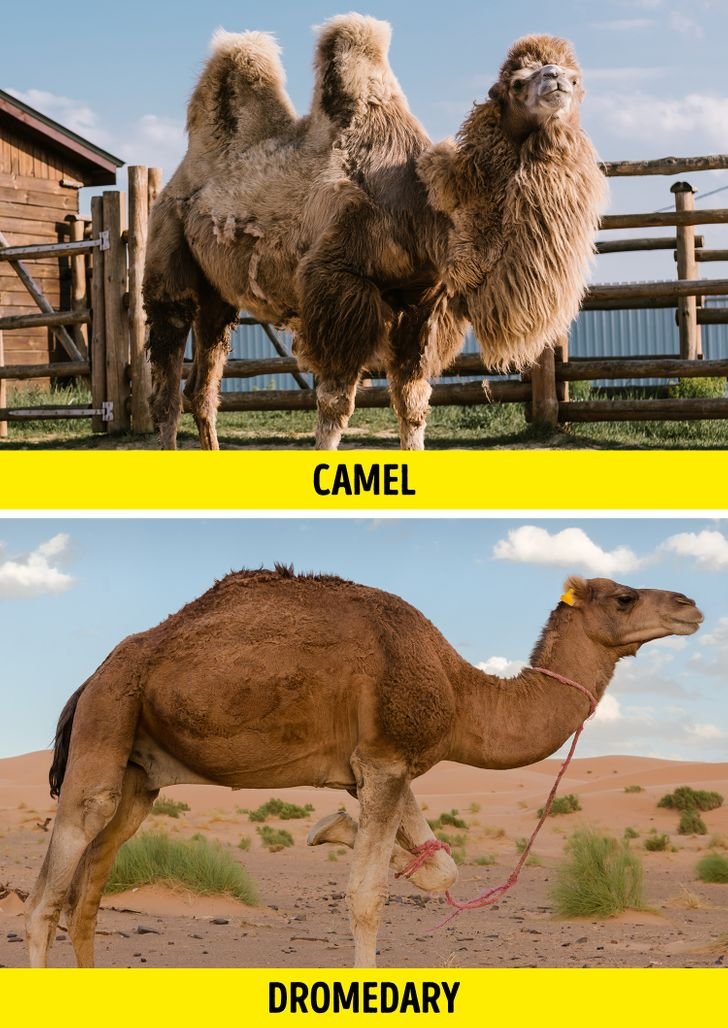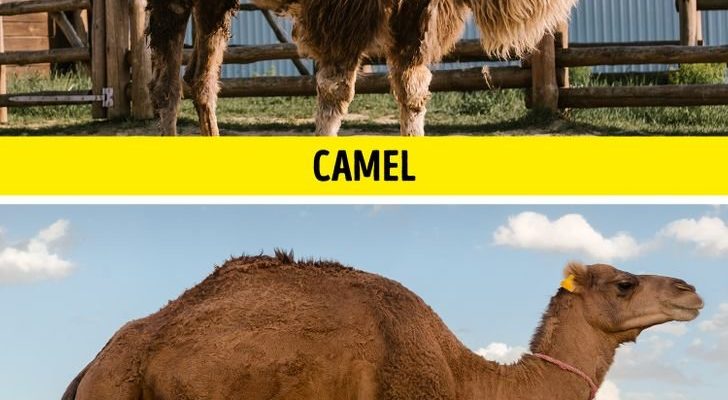
Discovering animals similar to the ox isn’t just about learning their names; it’s like unveiling a rich tapestry of life that connects various species. You might be surprised by how much these animals have in common with the humble ox and how different they can be at the same time. Let’s dive into the world of these captivating creatures!
1. Water Buffalo
The water buffalo is often held in high esteem in many cultures. With its large, curved horns and hefty body, it shares a striking resemblance to the ox. You might find them wallowing in muddy waters, which helps keep them cool. This is one of the best ways to tell them apart from a typical ox, which usually prefers drier environments.
Habitat plays a big role in distinguishing these animals. Water buffalo are often found in wetlands and rice paddies—places where they can take a dip. In contrast, oxen are more versatile. Whether used for farming or as pack animals in drier regions, they adapt well to various environments.
Interestingly, water buffalo are also known for their gentle nature. They’re often seen helping farmers with labor-intensive tasks and even contributing to food security in many areas. So, while both animals are hard workers, the water buffalo’s aquatic lifestyle sets it apart from the traditional ox.
2. Bison
Bison might come to mind when you think of strong, horned animals. These creatures roam the plains of North America and are known for their massive size and shaggy coats. Bison and oxen share a build that radiates strength, but their differences are clear once you observe them in their natural habitats.
One of the biggest distinguishing factors is the bison’s hump. Their muscular hump is a storage of energy, allowing them to traverse vast distances. On the other hand, oxen lack this characteristic and generally have a more uniform body shape.
Bison are also more territorial than oxen, often found in herds that roam large areas. While oxen are commonly domesticated and work alongside humans, bison remain wild animals that embody the spirit of the American frontier. So, if you’re out exploring the prairies, chances are you’re looking at bison, not oxen!
3. Yak
When you think of yaks, you might imagine high-altitude adventures in the Himalayan mountains. These sturdy animals are well adapted to cold climates, sporting thick fur that keeps them warm. Yaks and oxen have similar sizes and body structures, making them easy to confuse at first glance.
However, yaks have unique features. For instance, their long, flowing hair trails down their sides and can even sweep the ground, giving them a distinct look. In contrast, oxen tend to have shorter hair and are generally more uniform in color.
Yaks are often used by local communities for transportation, milk, and even wool. While an ox is typically utilized for farming or heavy lifting, yaks are crucial for life in the rugged mountains. This adaptability makes them not just similar but uniquely suited for their environments.
4. Zebu
Zebus are a breed of domestic cattle, easily recognized by the large hump over their shoulders. Found mainly in tropical regions, these animals have a unique appearance that sets them apart from traditional oxen. While both are used in farming, zebus have adapted to warmer climates.
One of the key differences lies in their skin. Zebus often have slick, short hair that helps them stay cool in hot weather. On the other hand, oxen can have a thicker coat that provides insulation against the elements.
Zebus are also known for their resilience and ability to thrive in harsh conditions. This quality makes them vital to many communities where other cattle might struggle. So, if you come across a humped creature in a warm climate, it’s likely a zebu, not an ox!
5. Highland Cattle
Highland cattle are famous for their long horns and shaggy coats, looking quite regal in their mountainous landscapes. These beautiful animals could easily be mistaken for oxen, especially from a distance. However, their unique characteristics make them distinctive.
What sets them apart is their fur. Highland cattle have thick, long hair that helps them withstand chilly weather. While oxen have a more uniform coat that varies among breeds, Highland cattle’s hair can be quite dramatic and fluffy.
These animals are often kept for their meat and milk, and their friendly demeanor makes them a favorite on farms. Just a glance at their iconic horns and you’ll know you’re looking at Highland cattle, not oxen!
6. Gaur
The gaur is one of the largest wild cattle species, native to South Asia. With a robust build and large horns, they might remind you of an ox. However, if you take a closer look, you’ll notice their tall stature and more slender legs.
The distinct differences in their appearance are significant. Gaurs have a distinctive hump and are often darker in color than typical oxen. Their impressive size and muscular build set them apart, making them a sight to behold in the wild.
These animals are known to be quite shy and elusive, preferring dense forests. Unlike oxen, which are more commonly domesticated, gaurs remain wild and are rarely seen in close proximity to humans. Spotting a gaur can be a thrilling experience for nature enthusiasts!
7. Yakutian Cattle
Originating from Siberia, Yakutian cattle are hardy animals known for their extreme cold tolerance. They share some physical traits with oxen, such as a stocky build and short legs, but their uniqueness is evident in their thick fur and adaptability.
What really makes them special is their ability to survive in some of the coldest climates on Earth. While oxen are generally found in a range of environments, Yakutian cattle are specifically bred to flourish in harsh conditions with limited resources.
They are also used for milk and meat, similar to oxen. However, their unique habitat and adaptations give them a distinct edge in survival. So, while they may look like oxen, Yakutian cattle are champions of endurance!
8. Banteng
The banteng is a wild cattle species native to Southeast Asia, often recognized by its muscular body and short coat. Although they might share a resemblance with domesticated cattle, their wild characteristics and behavior set them apart.
One clear distinction is their color. Bantengs are usually a striking reddish-brown, whereas oxen can come in various colors, including black and white. Their shorter stature also differentiates them from the more robust ox.
Bantengs are an important part of their ecosystems, often wandering in herds through forests and grasslands. Unlike oxen, they are less likely to be domesticated, adding to their wild allure. When you spot a banteng in its natural habitat, remember that you’re witnessing something quite different from an ox!
9. Sahiwal Cattle
Sahiwal cattle are known for their adaptability and are often bred for dairy in tropical climates. They bear some resemblance to oxen, especially in their robust bodies and overall size, but have unique features that set them apart.
One notable feature of Sahiwal cattle is their large, droopy ears. This helps them deal with the heat, as it enables better airflow. Oxen, on the other hand, generally have smaller ears and thicker skin to handle colder weather conditions.
These cattle are revered for their high milk yield and resilience. They thrive in hot, humid conditions, making them invaluable to farmers in their regions. So next time you see a sturdy creature with big ears in a warm setting, it’s likely a Sahiwal, not an ox!
10. Jersey Cattle
Jersey cattle are small but mighty! Known for their rich, creamy milk, they’re usually light brown and feature a more refined body shape than an ox. While they’re domesticated like oxen, their distinct traits make them easy to identify.
Their size is a major difference. Jerseys are often smaller, yet they have a graceful appearance. Their large, expressive eyes give them a friendly look, unlike the more robust ox.
These cattle are beloved for their milk production, which is highly sought after. While oxen are primarily used for labor, Jerseys are often kept for dairy purposes. So, if you encounter a smaller, milk-producing cow, chances are you’re looking at a Jersey!
Understanding the animals similar to the ox can deepen your appreciation for the diversity within the animal kingdom. From the gentle water buffalo to the majestic bison, each creature holds its own unique place in nature.
By recognizing their differences, we not only learn about these animals but also develop a richer connection to the habitats they thrive in. So, next time you’re out exploring or visiting a farm, take a moment to appreciate these incredible animals and the roles they play in our world!

